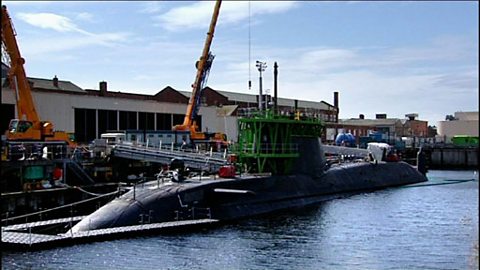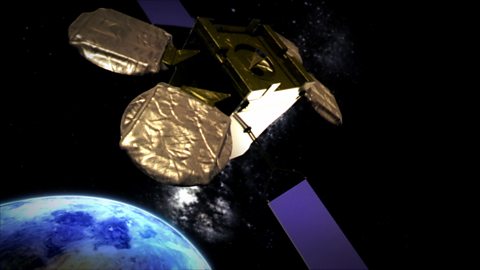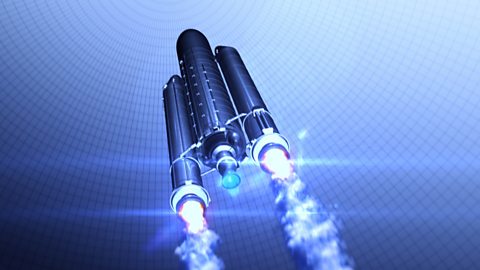UNKNOWN MALE:'Many of the things that we work on are mission critical. They save lives, they protect our troops.
91Čȱ¬ NEWS REPORTER:'The single biggest killer of British troops in Helmand, the roadside bomb. Some 80% of British deaths at the hands of the Taliban are down to these improvised explosive devices.'
NARRATOR:'Robots are an increasingly important part of engineering today.
NARRATOR:'QinetiQ is an international company, and one of the things they specialise in is robotic engineering.'
UNKNOWN MALE:So it's quite simple. And that's battery levels, video signal. So now you've actually got the video signal level on there, which is quite useful.
NARRATOR:'When used in potentially dangerous areas, robots can protect human lives, making them a hugely valuable resource.
NARRATOR:'The wars in Afghanistan and Iraq are forcing QinetiQ engineers here to continually redesign their robots to deal with the latest threats.
NARRATOR:'TALON robots are used to reduce the risk to soldier's lives.
NARRATOR:'Here, the teams produce an army of up to 100 robots every single month.
NARRATOR:'TALONs are built to be repaired in battle, so their major parts can be removed quickly, using fast-release pins.
NARRATOR:'The robots enable soldiers to keep a safe distance, 1,200m, away from explosive devices.'
BOB QUINN:'I think there's a misconception about the use of robots in the battlefield. There are no autonomous robots on the battlefield making their own decisions.
BOB QUINN:'They are human operated machines, where the human decides where it goes, how fast it goes, what it does when it gets there.'
BOB QUINN:It allows a soldier on the battlefield to have an arm that's a mile long.
NARRATOR:'Most of TALON's clever design specifications are a closely guarded secret. But their electric motors are powerful enough to pull a small car.
NARRATOR:'They're equipped with up to four high-spec cameras, allowing their operators a 360 degree view.
NARRATOR:'And with infra-red and night vision, TALONs can see in the dark.
NARRATOR:'In fact, they can see better than humans in the dark.
NARRATOR:'The TALON uses a manoeuvrable gripper and arm to perform its tasks. The key design feature is that it can be replaced quickly and easily.'
BOB QUINN:'New arms are attached to the robot in less than 20 minutes,
BOB QUINN:'because that arm is what gets blown up many, many, many times.
BOB QUINN:We want an expendable hand.
NARRATOR:'But these clever robots are not just used on the battlefield. They can be modified to enter other deadly environments.
NARRATOR:'Jen Pagani is a sensor specialist who's worked with robots for six years, and she's currently adapting these robots to be used by civilian rescue services.'
JEN PAGANI:This quick-release rack has an array of detection instruments.One of the sensors is a toxic industrial chemical detector, another sensor is a radiation detector.
JEN PAGANI:And then we have a detection instrument that is a confined space gas monitor, so it'll detect combustible gases and other gas type threats.
JEN PAGANI:We also have a temperature sensor on this specific robot as well.
JEN PAGANI:Thank you.
JEN PAGANI:'We're just gonna verify all of the detection instruments are communicating back to the operator control unit.
JEN PAGANI:Test one.
JEN PAGANI:Communications check.
NARRATOR:'The gases TALON detects are so deadly Jen must use a safe chemical substitute to check its sensors are working.'
ALARM WAILING
JEN PAGANI:Clear.
JEN PAGANI:OK.
NARRATOR:'Jen has been working with her colleagues in the UK on this new project.'
JEN PAGANI:It'll tell you chlorine, it'll tell you carbon dioxide, but it'll also tell you your combustible limits as well.
ROB:Could we put a different sensor with it, or would that be very complicated?
JEN PAGANI:We'll get that right over to you and test it out, and it would be really great to hear feedback from the London Fire Brigade of which sensor they like better.
ROB:OK, I'll let you know how we get on when we get it.
JEN PAGANI:Great. Thanks, Rob. Talk to you soon.
NARRATOR:'This work means TALON robots are now being deployed on the streets in the UK, used by the London fire service.
NARRATOR:'Here, the specialist team are already on 24 hour standby to be called to industrial fires.'
ROB:The ideas is that we're a hazardous materials response team, so that if the fire brigade encounters a situation where any hazardous materials are involved, we can give them the stand off to keep their guys safe by deploying robotic vehicles.'
NARRATOR:'TALON, and its big brother BISON, are operated from a custom fitted vehicle.'
ROB:So this is the command centre of the van. So we can record all the video feeds from all the robots, including the van cameras, and everything that's going on, automatically, for forensic evidence if the fire brigade needs it at a later date.
NARRATOR:'If this London experiment works, not only will we see robots on the battlefield, but also on the streets of the UK, as they deal with emergency chemical incidents, potentially saving hundreds of lives.'
Video summary
Robots are human operated machines that can 'take the risk' for humans.
At Qinetiq, they are designed and built to reduce the risk to humans.
Originally they were used as bomb disposal tools.
Following talks with a new client, they are being modified to work for the London Fire Brigade.
A glimpse into the future where robots which were used on the battlefield could be used on the streets of the UK to deal with potentially harmful situations.
Teacher Notes
Could be used to introduce concepts of robotics and 'mechatronics' (electronic and mechanical control).
Learners might be asked to develop a design specification for each of the contexts described in the clip (bomb disposal and reconnaissance in burning buildings).
They might be prompted to focus on the function, sensors, control, communication, maintenance and protection for each scenario.
In addition to the practical application of robotics, the clip might be used to provide information, advice and guidance on careers in robotics and mechatronics.
Relevant for teaching Design Technology OCR, Edexcel, AQA, WJEC KS3, KS4/GCSE in England and Wales, CCEA GCSE in Northern Ireland and fourth level, SQA National 4/5 and Higher in Scotland.
Why is testing essential in design and build? video
A look at the process for testing the weapons system on a new submarine and an introduction to the vital role of testing and analysis.

How satellites survive in space. video
A thermal architect explains how satellites are designed.

How satellites are tested. video
Find out how a satellite is tested in order to survive in space for 15 years.
